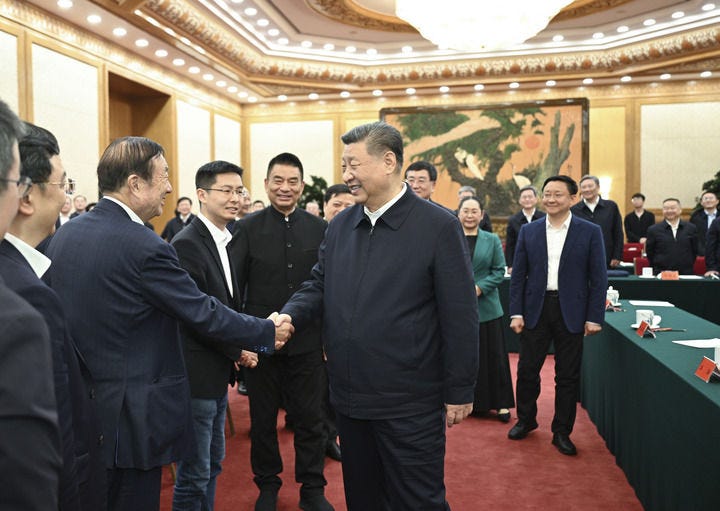($) Huawei's Global AI Ambition: The Core Depends on The Soul
A version of this essay was first written a few weeks ago as a contribution to a closed-door workshop hosted by a leading DC think tank on Huawei’s global AI strategy. It is updated with the latest developments on Huawei, Nvidia, and export control.
This is for our premium members only. If you are reading this in full, thank you for being an Interconnected Premium member! If you aren’t, I hope you become one by scrolling down and tearing down that paywall! 😎
When Huawei’s founder, Ren Zhengfei, met with Xi Jinping in mid-February along with other leading Chinese entrepreneurs, he told the leader of his country that he used to be very concerned that Chinese technology “lacks ‘heart’ and soul” (“缺芯少魂”). But he no longer feels that concerned. ‘Heart’, a clever play on words in Chinese that homonymically describes the heart of the country, refers to semiconductors. ‘Soul’ on the other hand alludes to software, the bits and bytes that make the 'heart’ come alive.
Historically, Huawei has been a hardware company, specializing in routers, switches, smartphones, 5G base stations, and chips. Looking ahead, for Huawei's AI expansion ambition beyond its own borders to succeed, the path lies more in its software prowess. There are telltale signs of the company pushing aggressively on both the hardware and software front to achieve that ambition, with notable investments in Southeast Asia, Latin America, the Middle East, and leading open-source communities.
AI in a Box
At the heart of Huawei's AI strategy lies a contrarian approach that sets it apart from competitors both in the US and China.


